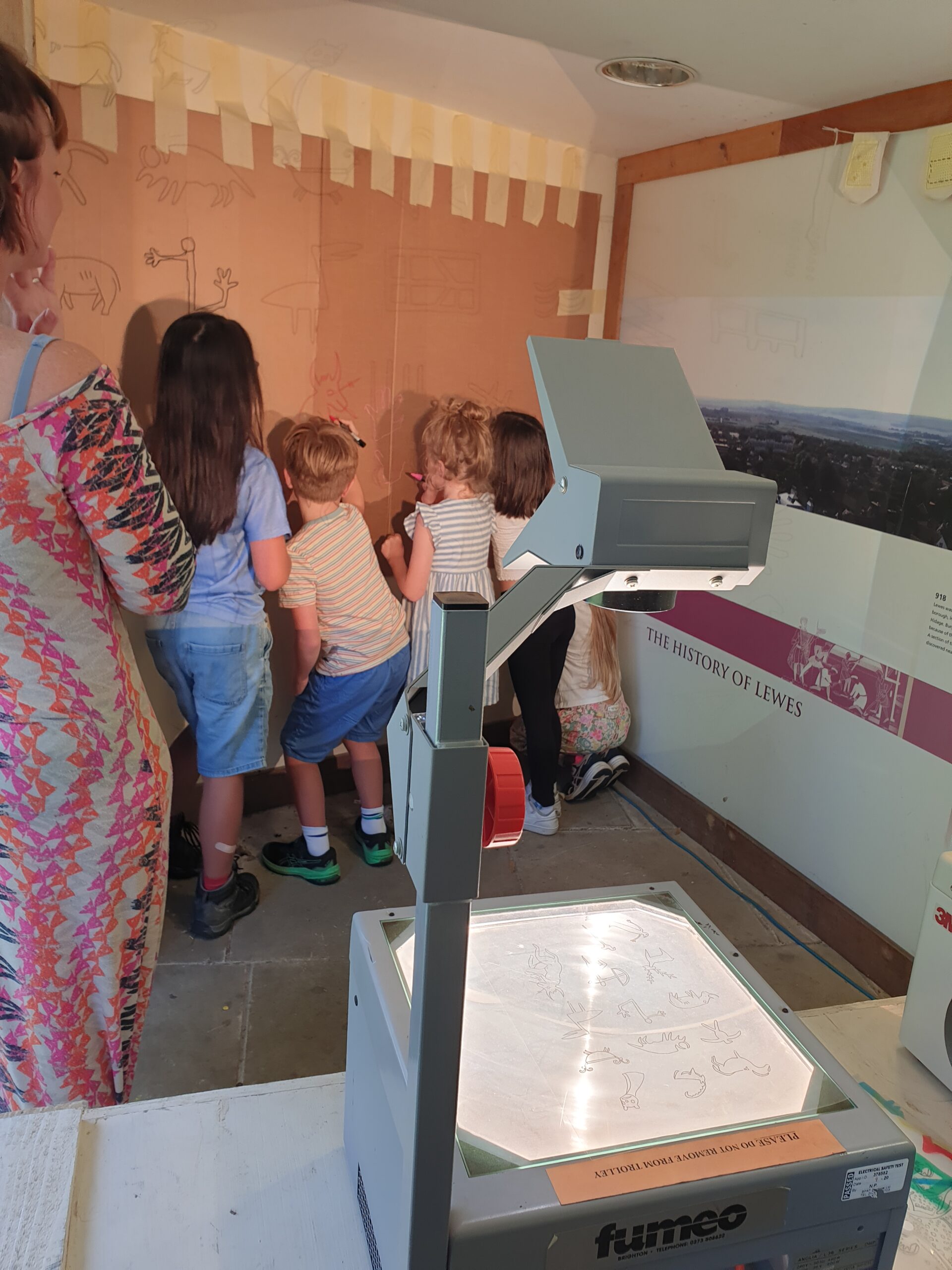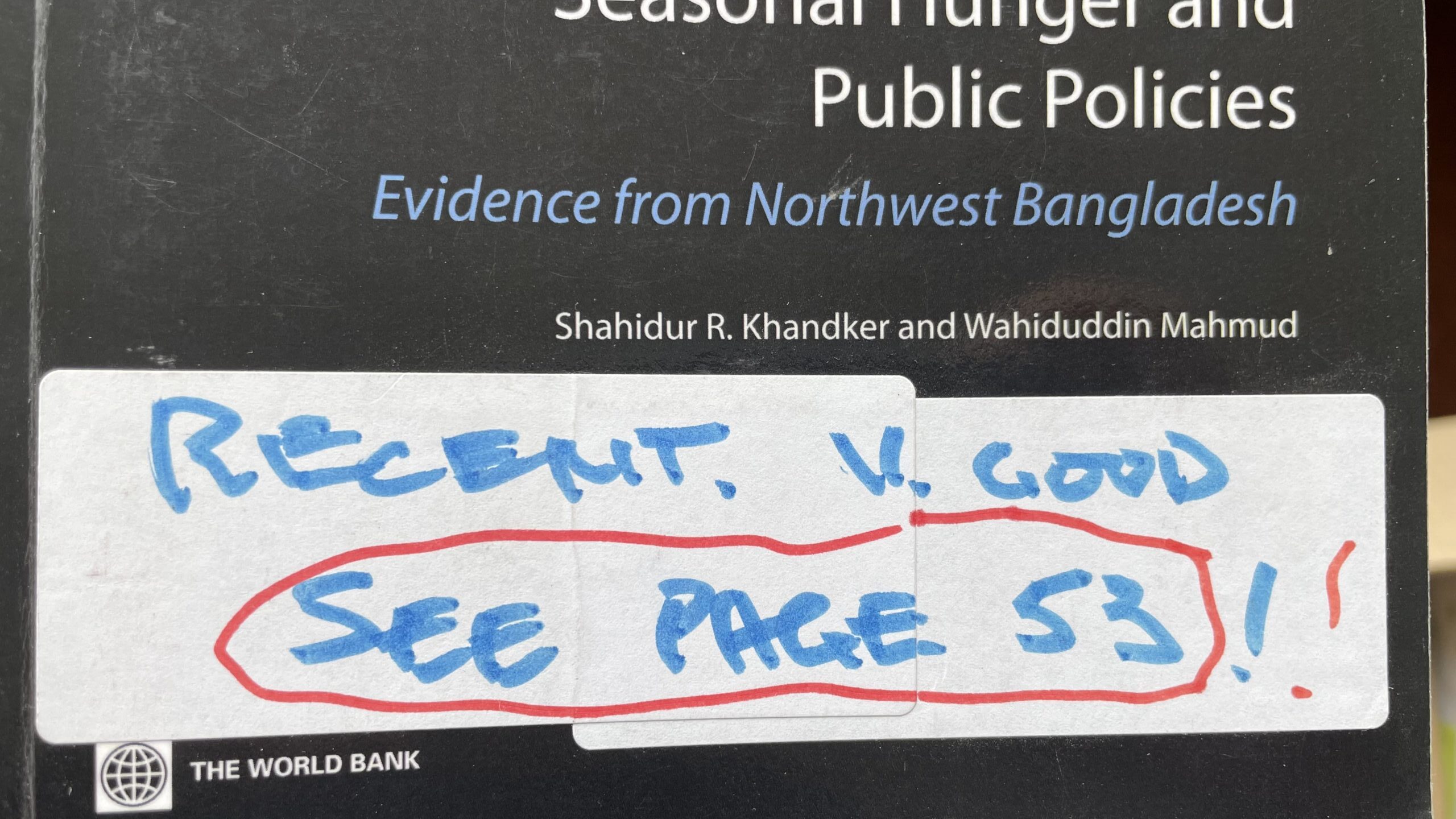Here at IDS, on the second floor of the Octagon, is a hidden treasure trove: the Participation Resource Centre (PRC). Full of useful resources on participatory methods and the theory of power and participation, for many years, it was funded, open to the public and photocopies of materials were posted across the globe to interested parties on request. This legacy is still evidenced by the envelopes and photocopies stacked in the PRC ready to find their way to new and curious hands.
Over the years, as funding dwindled, requests for materials lapsed, and online availability of resources improved, we entered a period of uncertainty about the PRC’s future. Since Robert Chambers decided to reduce his involvement in work at IDS just before the pandemic, he has also been clearing out his office at home, and as his colleagues and friends, many of us have been ferrying in new boxes of literary gold (often handsomely compensated with tea, cake and excellent conversation from Robert and his wife, Jenny), putting it in the PRC until we knew what to do with it.
As these boxes built up on the floor over the years, the size of the organisational task seemed unsurmountable, and the room became largely inaccessible unless you possessed acrobatic talents beyond that of your average staff or student member looking for a resource.
Getting the wheels in motion
A prompt from our finance department to spend a small amount of unused funds (generously donated some years ago by the Carolyn Jones Trust Fund) finally pushed us (Alice Webb and Mariah Cannon) to spend two days sorting as much as we could.
The two days were full of highs and lows (both of stacked boxes and emotions). To organise the PRC, we inevitably had to make plenty more mess first. With the help of the Facilities team, we ferried most of the old IT equipment, display stands and miscellaneous stationery to other areas of IDS, or (more often) to the recycling bins. The overhead projector which was often used by Robert for seminars and lectures has a new lease of life via an IDS colleague’s partner at the local organisation Archaeodiscovery, who used the projector for a recent Festival of Archaeology at Lewes Castle to encourage children to interact with cave art.

We then sorted through as many of the boxes as we could manage in the two days. Robert had thematically grouped the resources, which included books published as far back as 1895, printed journal articles with Robert’s handwritten annotations, audio-visual material such as photo slides, albums of printed photos and DVDs, newspaper clippings, material in translation, papers from international institutes dating back to the 1970s, and, to the delight of the IDS Publications team, printed copies of early IDS Working Papers and Bulletins. We’re still hoping to uncover the elusive IDS Bulletin Volume 1.
What to keep, and what to recycle
Given that much of the material we were working with was one of a kind, it felt like a big responsibility making decisions on what to keep and what to recycle. Even recycling (un-annotated) photocopies of journal articles felt daunting at first as at one point they were considered precious enough for Robert to save in his personal archives. Whenever we were in doubt, we decided to keep resources. We also amassed a large pile of duplicate books and resources to give away to incoming students this academic year.
While wading through the vast piles of resources, we tried to bear in mind the advice of our Participation, Inclusion and Social Change cluster colleagues. They suggested we don’t think about what would be useful now, but instead about what might be useful in 30 or 50 years to historians and researchers.
This was at the forefront of our mind when reflecting on resources with Robert’s scrawled annotations. Robert’s archives also included fascinating personal correspondence – often in the form of printed emails — reflecting on topics such as (unsurprisingly) research methods and the priorities of multilateral donors at particular moments in time. This material is fascinating (and often humorous), and would undoubtedly be useful to many, both now and in the future, but also presents some serious questions about what can ethically and feasibly be made publicly available.
What’s next?
Our short time in the PRC prompted some clear next steps, but also raised concerns around what could be achieved without further funding and archival expertise.
By the end of the two days, we had managed to clear a lot of floor space which means you can once again walk into and around the room, sorted through a quarter of the papers and shelved all the books that were spread out over the boxes. Despite not finishing sorting through the papers, we now have a good idea of the types of materials that are there and have restored the PRC to a state which is accessible to IDS students,staff and visitors to the building.
We know from our conversations with Robert that he is passionate about the usefulness of the PRC material. This is evident in the stickers and notes he attached to books and papers, which say things like “A must-read!” and “Essential reading for MAP students!”


We visited Robert to ask him to review this blog, and he said:
“The Participation Resource Centre represents a unique opportunity to funders, students, practitioners and researchers, jam-packed with resources that have made me, and others, stop in our tracks at many points over the years. It is an inspiring springboard – you might find out about a method used many years ago, in a place you’ve never visited, which changes the way you approach your work. I invite you to go in and explore.”
Without funding, this collection of fascinating resources might sit there gathering dust for years. With funding, we would work with archivists and digitisation experts to make sense of what is there and to help us navigate thorny issues of copyright and permissions. This could potentially build on the work of the BLDS Legacy Collection. Another simpler win (though also requiring dedicated time and funding) would be to systematically go through, catalogue and remove resources that are freely available online.
At one point, the Participatory Methods website served as a complementing catalogue of physical resources in the PRC as well as online resources. While we have continued to grow the online offering of resources on the website through project work, the catalogue hasn’t been updated with the newly-available material.
Our eventual goal is to make as many resources as possible freely and openly available online, so that everyone can benefit from the collection. We feel strongly that access should not be restricted to those with the funds to travel to the UK and IDS.
To quote one of the emails we found from Robert to a colleague: “Let’s make something happen. The time is ripe. Well, the fruit is ripe. Quite low-hanging. Tastes great. And full of vitamins.”
